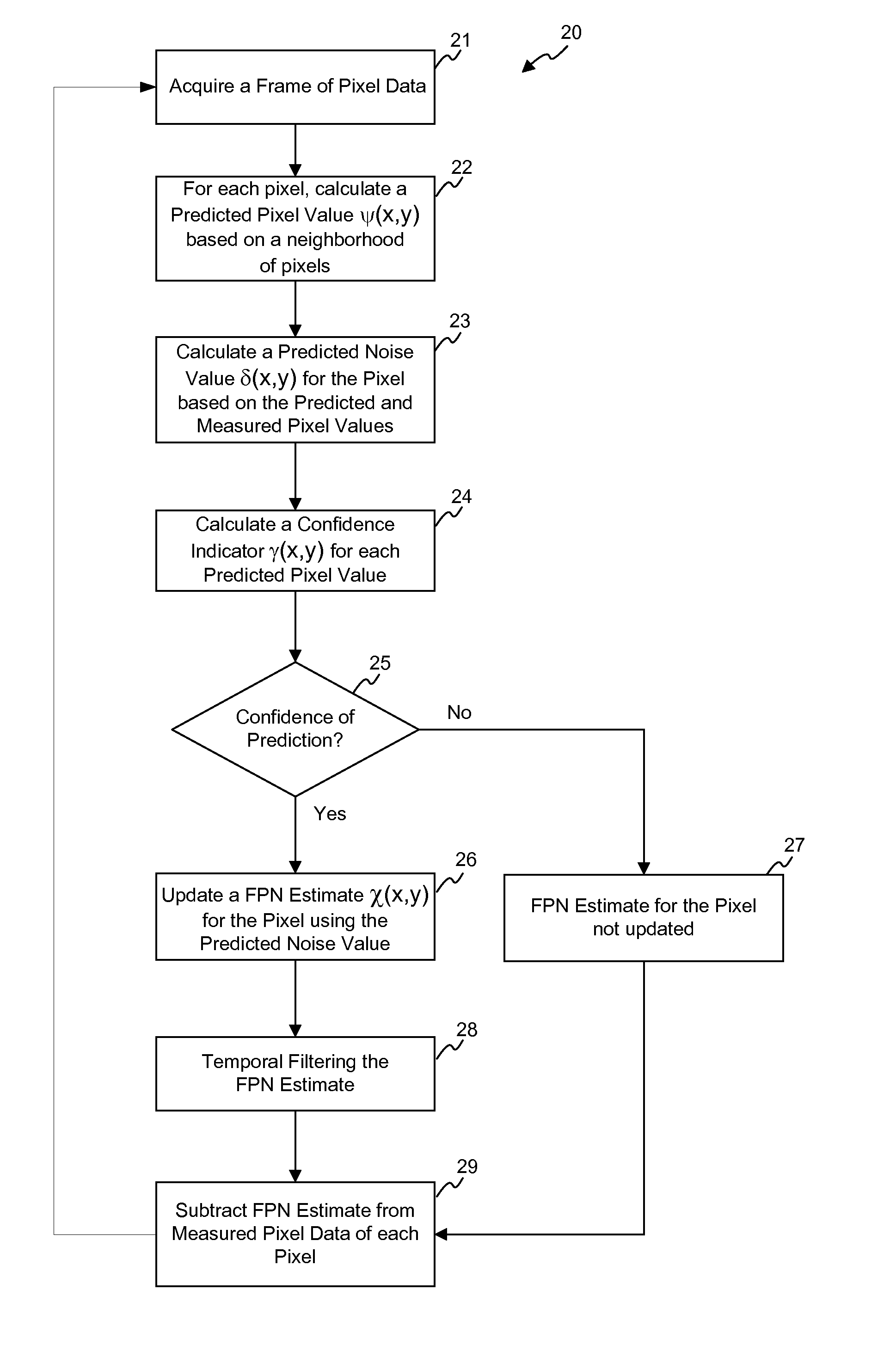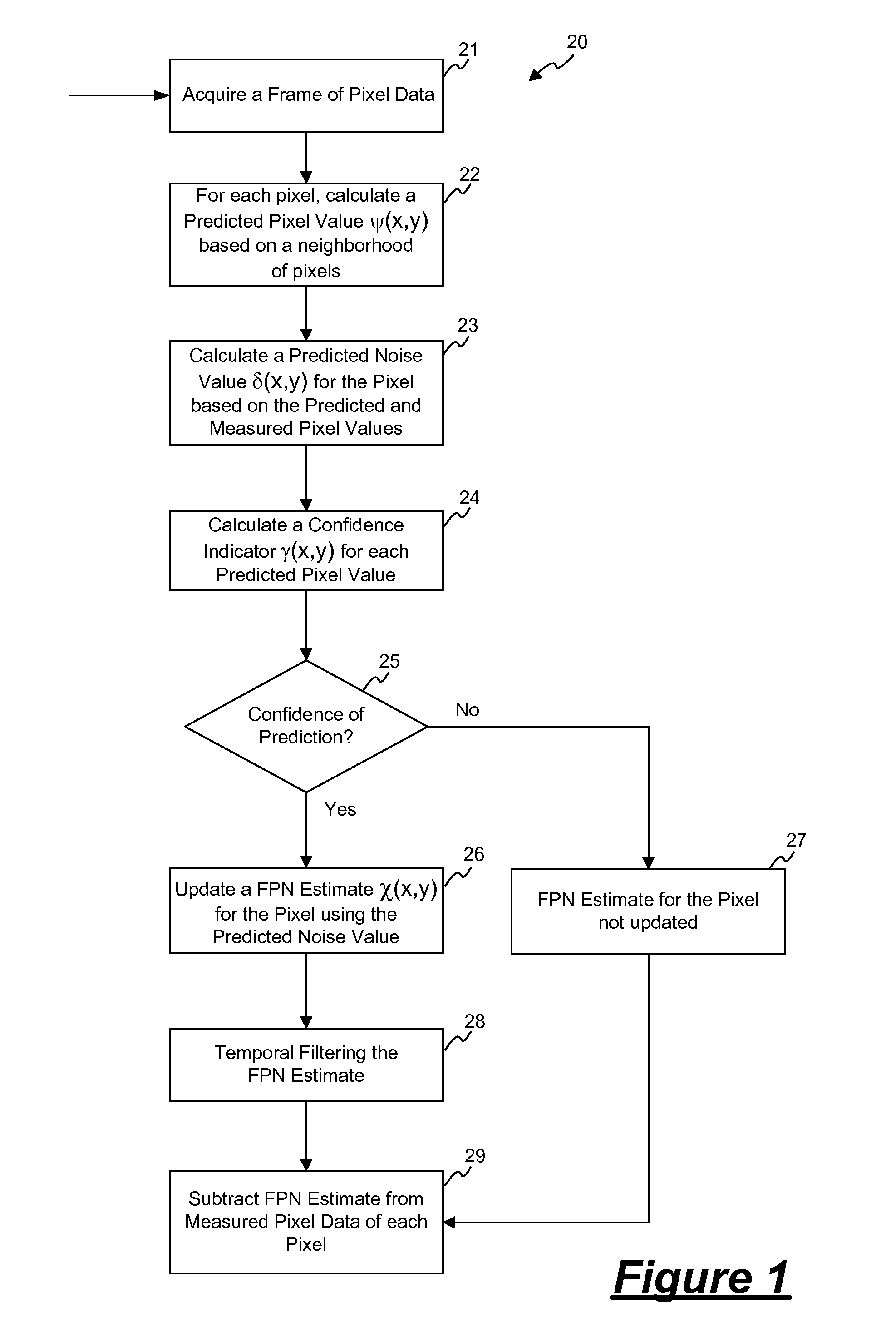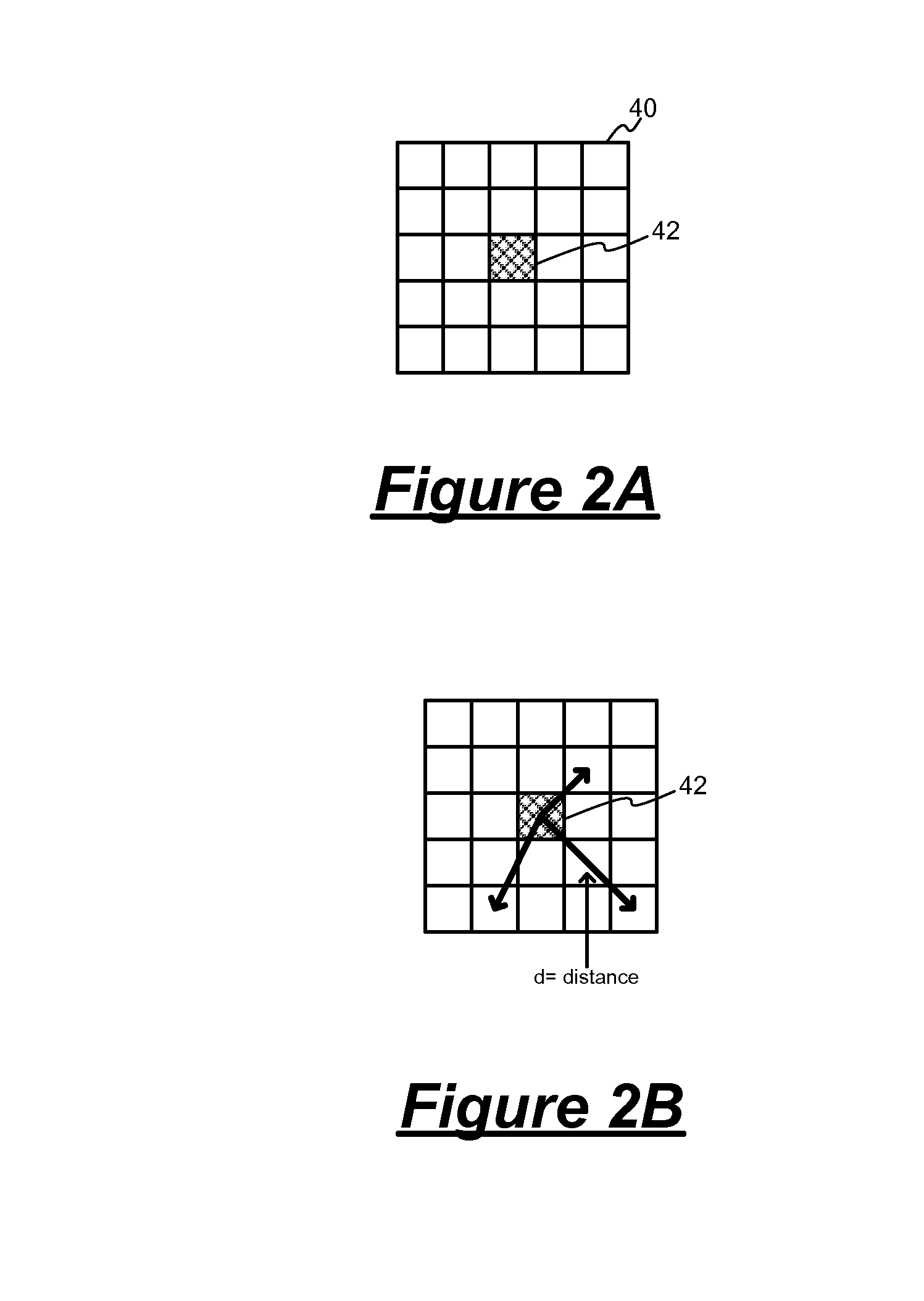Removal of Stationary Noise Pattern From Digital Images
a technology of digital image and noise pattern, applied in the field of digital imaging, can solve the problems of reducing the signal to noise ratio of image sensor, cmos image sensor generally exhibits fixed pattern noise, and fixed pattern noise is considered one of the major weaknesses and deficiencies of cmos digital image sensor
- Summary
- Abstract
- Description
- Claims
- Application Information
AI Technical Summary
Benefits of technology
Problems solved by technology
Method used
Image
Examples
Embodiment Construction
[0022]In accordance with the principles of the present invention, a method in a digital imaging system for removing a stationary noise pattern from digital images uses an adaptive noise estimation algorithm to calculate a prediction of the fixed pattern noise and a confidence estimate for the prediction. Depending on the value of the confidence estimate, the noise prediction is selectively incorporated into a fixed pattern noise estimate. The fixed pattern noise estimate is applied to the captured images to remove the fixed pattern noise. Specifically, a noise prediction for each pixel is estimated based on the captured image and a decoded or “predicted” image derived using spatial and temporal prediction techniques. In one embodiment, the noise prediction is used to update the noise estimate only when the confidence estimate is greater than a threshold value. In another embodiment, the confidence estimate is used as a weight factor for blending the noise prediction into the noise e...
PUM
 Login to View More
Login to View More Abstract
Description
Claims
Application Information
 Login to View More
Login to View More - R&D
- Intellectual Property
- Life Sciences
- Materials
- Tech Scout
- Unparalleled Data Quality
- Higher Quality Content
- 60% Fewer Hallucinations
Browse by: Latest US Patents, China's latest patents, Technical Efficacy Thesaurus, Application Domain, Technology Topic, Popular Technical Reports.
© 2025 PatSnap. All rights reserved.Legal|Privacy policy|Modern Slavery Act Transparency Statement|Sitemap|About US| Contact US: help@patsnap.com



